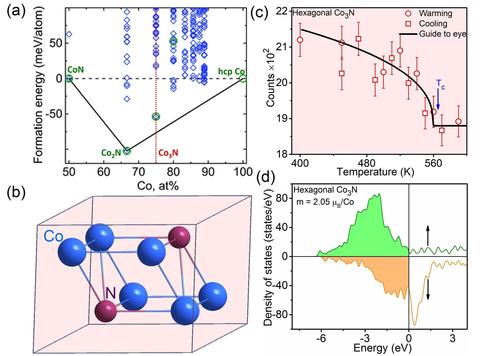Securing America’s future through rare-earth-free magnets

(a) Calculated formation energies for new Co-N compounds. (b) Experimentally synthesized hexagonal Co3N structure using cluster deposition. (c) Neutron diffraction data showing magnetic transition Tc » 550 K. (d) Total density of states revealing strong ferromagnetism. See https://www.novomag.physics.iastate.edu/structure-database.
Created September 2, 2021

